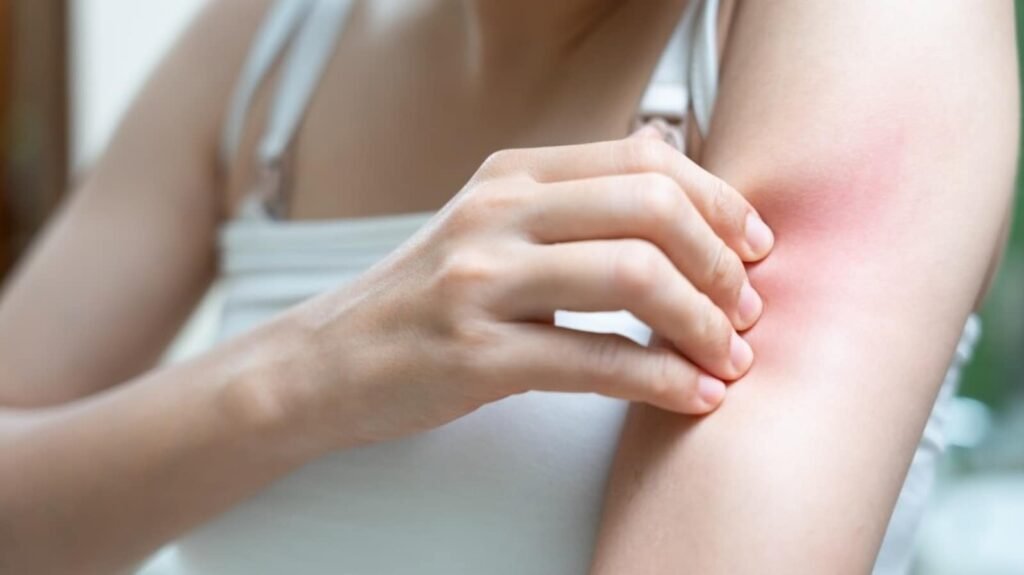Essential Guide to Managing Common Skin Conditions During Monsoon
As the monsoon season arrives, the combination of high humidity, constant dampness, and limited sunlight can lead to a host of skin issues. Wet shoes, soaked clothing, and excessive sweating often exacerbate common skin conditions. According to dermatology experts, being aware of these potential problems is crucial for maintaining healthy skin throughout the rainy season.
Understanding Common Skin Conditions in Monsoon
During monsoon, several skin conditions become prevalent, impacting comfort and health. Here are the most frequent issues to watch for:
1. Fungal Infections
- Examples: Tinea Cruris (jock itch), Tinea Corporis (ringworm), and candidal infections, particularly in skin folds.
2. Folliculitis
- Description: An infection of hair follicles that results in small, tender, red bumps.
3. Contact Dermatitis
- Trigger: Prolonged exposure to wet clothing, rain, or artificial jewelry can cause skin irritation.
4. Miliaria (Heat Rash)
- Cause: Blockage of sweat glands leading to itchy red spots.
5. Eczema Flares
- Impact: Individuals with pre-existing eczema may experience worsened symptoms due to humid conditions.
Effective DOs to Protect Your Skin
Taking proactive steps can significantly reduce the chances of developing skin problems during the monsoon.
Wear Loose and Breathable Clothes
- Tip: Opt for natural fabrics, like cotton, which help absorb sweat. Avoid tight fitting clothing made of polyester or nylon that trap moisture.
Thoroughly Dry the Body
- Routine: Pat dry skin folds after exposure to rain or sweat to minimize irritation.
Prioritize Foot Care
- Advice: Prefer sandals over shoes and socks. If shoes are necessary, change into a fresh pair twice a day and apply antifungal powder to keep feet dry.
Bath After Sweating
- Recommendation: Take a warm shower post-sweating to cleanse the skin effectively.
Moisturize Daily
- Product Suggestion: Use lightweight, gel-based moisturizers post-bath on damp skin to maintain hydration without excess greasiness.
Critical DON’Ts for Skin Health
Avoiding certain practices can prevent exacerbating skin conditions.
Refrain from Scratching
- Warning: Persistent itching can lead to further inflammation and potential infection.
Limit Harsh Soaps or Scrubs
- Insight: Overusing these products increases the risk of developing infections.
Avoid Self-Medicating with Steroid Creams
- Danger: Unprescribed steroid creams can provide temporary relief but may lead to complications such as fungal infections.
Do Not Share Personal Items
- Directive: Sharing towels, razors, or footwear can spread infections and should be avoided.
When to Consult a Dermatologist
While many monsoon-related skin concerns can be finetuned at home, medical attention is necessary in specific circumstances. Seek consultation if:
- A rash lasts longer than 3-5 days without improvement.
- You observe increasing redness, swelling, or pus.
- There are recurrent fungal infections in the same area.
- There are adverse reactions to steroid creams, such as skin thinning or burning.
Timely professional consultation can prevent minor issues from escalating into more severe conditions.
Conclusion
Monsoon brings a refreshing change but also comes with its set of skin challenges. By following the do’s and don’ts outlined above, you can help maintain healthy skin throughout the rainy season. Remember that your skin can indicate underlying issues; pay attention to its signals and seek help when necessary. For more information on skin health, consult authoritative sources like the American Academy of Dermatology or your local dermatologist.
This guide aims to inform you about managing skin health effectively during monsoon. For personalized advice, always consult with a healthcare professional.


